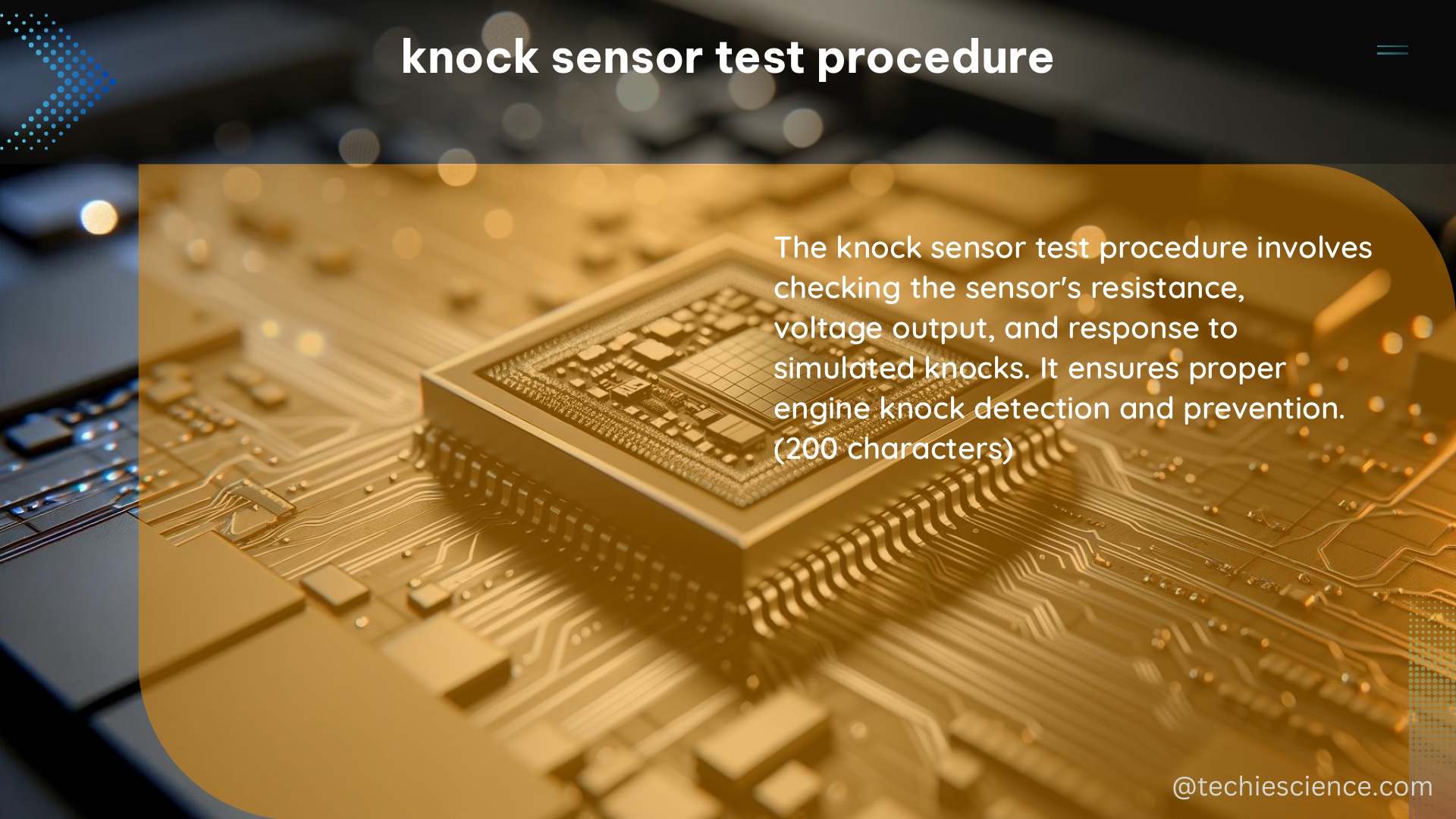Summary
Knock sensors are critical components in modern internal combustion engines, responsible for detecting engine knock and adjusting the ignition timing accordingly. This comprehensive guide delves into the various methods and technical specifications for testing the functionality of knock sensors, providing a valuable resource for DIY enthusiasts and automotive technicians alike.
Manual Testing

One of the simplest ways to test a knock sensor is through manual testing. Start by warming up the engine and letting it idle. Then, carefully tap the engine block near the knock sensor using a ball-pein hammer. The sensor should detect the artificial knock and you should observe a decrease in engine RPM as the timing is retarded to prevent further knocking.
Using a Scanner
Modern diagnostic scanners can be a valuable tool for testing the knock sensor. By monitoring the knock counts displayed on the scanner, you can assess the sensor’s functionality. If the sensor is not working correctly or is not detecting any knocks, you may notice a decrease in engine performance, such as a clicking or pinging sound, particularly during acceleration.
Artificial Knock Test
The most commonly used measurement technique for testing knock sensors is the artificial knock test. This involves connecting an AC voltmeter across the output of the knock sensor and then striking the engine block with a hammer to create an artificial knock. The knock sensor should produce an AC voltage in response to the simulated knock event.
Ohm Meter Test
Some knock sensors, particularly older resistor-type sensors, can be tested using an ohm meter. However, many modern knock sensors are more complex and may not be easily tested with an ohm meter. In such cases, it may be more effective to simply replace the sensor if there are any doubts about its functionality.
Technical Specifications
Knock sensors are typically designed to operate within a specific frequency range, usually between 5 kHz and 15 kHz. They should have a sensitivity of at least 10 mV/knock and a response time of less than 1 millisecond. These technical specifications ensure that the sensor can accurately detect and respond to engine knock events.
Testing under Different Conditions
To ensure the knock sensor is functioning correctly, it is recommended to test it under various driving conditions, such as under load, at high RPM, and during acceleration. This comprehensive testing approach helps to identify any potential issues or inconsistencies in the sensor’s performance.
Additional Considerations
When testing knock sensors, it’s important to consider the following factors:
- Sensor Location: The knock sensor is typically located near the engine block, where it can effectively detect vibrations and pressure waves associated with engine knock.
- Wiring and Connections: Ensure that the knock sensor’s wiring and electrical connections are in good condition, as any issues with the wiring can affect the sensor’s performance.
- Sensor Replacement: If the knock sensor is suspected to be faulty, it’s generally recommended to replace it rather than attempting to repair it, as knock sensors are relatively inexpensive and critical to engine performance and protection.
Conclusion
Proper testing and maintenance of the knock sensor is essential for ensuring optimal engine performance and preventing potential engine damage. By following the comprehensive guide outlined in this article, you can confidently diagnose and address any issues related to the knock sensor in your vehicle.
References
- Knock Sensor Testing and Troubleshooting
- Seeking Alt Method to Verify Knock Sensor Functionality
- Knock Sensor Characteristics and Evaluation
- Knock Sensor Modeling and Simulation for Engine Control
- How to Test a Knock Sensor

The lambdageeks.com Core SME Team is a group of experienced subject matter experts from diverse scientific and technical fields including Physics, Chemistry, Technology,Electronics & Electrical Engineering, Automotive, Mechanical Engineering. Our team collaborates to create high-quality, well-researched articles on a wide range of science and technology topics for the lambdageeks.com website.
All Our Senior SME are having more than 7 Years of experience in the respective fields . They are either Working Industry Professionals or assocaited With different Universities. Refer Our Authors Page to get to know About our Core SMEs.